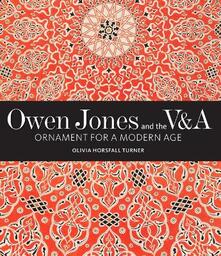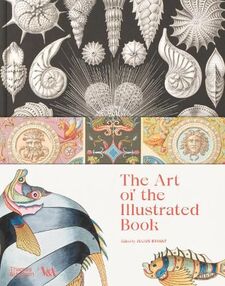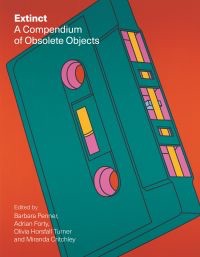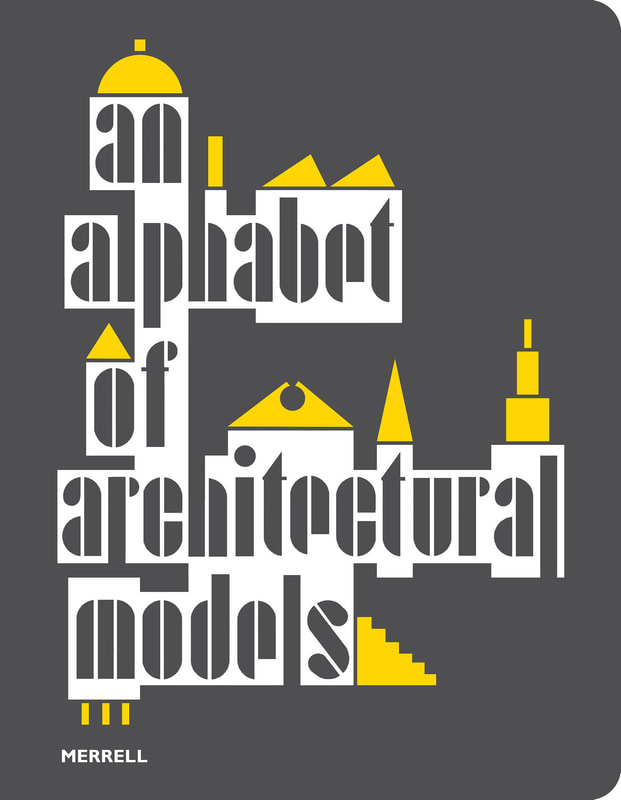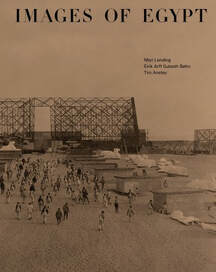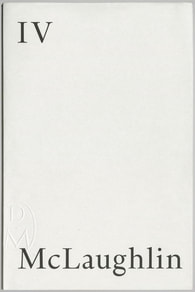I've written, edited and contributed to a variety of volumes - below is a selection of the more substantial offerings.
My research has also been published in Architectural History, the Antiquaries Journal, and I write articles and reviews for a variety of publications, including Apollo and World of Interiors.
My research has also been published in Architectural History, the Antiquaries Journal, and I write articles and reviews for a variety of publications, including Apollo and World of Interiors.
|
I am thrilled that Owen Jones and the V&A: Ornament for a Modern Age, my book on Owen Jones and his relationship with the early South Kensington Museum, as the V&A was known in its earliest days, is now available. It explores the three projects that Jones undertook in connection with the museum: The Grammar of Ornament (1856), the decoration of the so-called 'Oriental Court' in the early 1860s and Examples of Chinese Ornament (1867) and in doing so, sheds light on both Jones's work and the identity of the V&A.
‘Behind every great Victorian architect is a no less great designer, artist and innovator. None embodied the global enterprise that was Victorian Britain more inventively than Owen Jones. At last he has the recognition he deserves.’ Simon Jenkins 'Owen Jones and the V&A is essential reading for all interested in Victorian Britain and its legacies.' Tim Barringer, Yale University You can order direct from the good folks at Lund Humphries: www.lundhumphries.com/products/owen-jones-and-the-v-a |
|
It was a pleasure to contribute a chapter on architectural publications to this tome on The Art of the Illustrated Book. It contains a kaleidoscope of imagery from illustrated books from the medieval period to the modern day. Numerous brilliant colleagues at the V&A have each selected the contents for their thematic chapter and crafted an informative introduction to each genre of illustrated book.
The Art of the Illustrated Book (2022) is published by Thames and Hudson and is available from your favourite purveyor of reading matter. |
|
Extinct: A Compendium of Obsolete Objects is a book about designed objects that once embodied visions of the future but which failed to establish themselves in the popular consciousness. Co-edited with Barbara Penner, Adrian Forty and Miranda Critchley, this book explores ideas of the future through 85 different objects that promised a new way of living but are now obsolete.
Extinct: A Compendium of Obsolete Objects (2021) is published by Reaktion and can be ordered from all good booksellers. |
|
This book on the irresistible subject of architectural models is co-edited with my colleagues Simona Valeriani, Matthew Wells and Teresa Fankhänel.
It features 26 entries - one for every letter of the alphabet - on different aspects of architectural models, from A (Ancient) to Z (Zoom). Along the way it looks at the production and reception of architectural models from a variety of different perspectives including those of architects, model makers, curators, conservators, and historians. An Alphabet of Architectural Models (2021) is published by Merrell and can be ordered from all good booksellers. |
|
It's an honour to be one of the contributors to Images of Egypt, edited by Mari Lending, Eirik Arff Gulseth Bøhn and Tim Anstey. The book arises from Printing the Past - a HERA-funded research project run by the Oslo School of Architecture - and explores how prints, paintings, photographs, furniture, ceramics, exhibitions and facsimiles have projected and circulated images of Egypt from the eighteenth century to the present day.
My essay focuses on a very long drawing of the tomb of Ramesses III by Francis Arundale which is in the V&A collection: |
|
To accompany the exhibition 'Opening Lines: Sketchbooks of Ten Modern Architects', which I co-curated at the Tchoban Foundation Museum for Architectural Drawing in Berlin, we produced a series of publications on some of the architects featured in the show: Tony Fretton, Niall McLaughlin, Adolfo Natalini and Álvaro Siza. Each book consists of interviews with the architect and reproductions of pages from their sketchbooks. I was fortunate enough to write the essay accompanying the volume on Niall McLaughlin. These lovely books, beautifully designed by Ray O'Meara, are available from the Drawing Matter website.
|
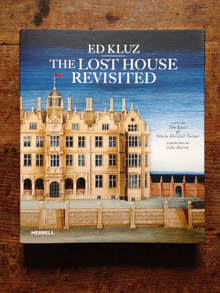
I'm delighted to have collaborated with my friend, the brilliant artist Ed Kluz, on the first book devoted to his remarkable work. The Lost House Revisited examines the allure of lost houses, from the partially ruined to the completely vanished. It explores nine different country houses, including Holdenby, Hamstead Marshall, Coleshill, Eastbury Park and Fonthill Abbey, which Ed has miraculously resurrected in his visionary collages, scraperboards and sketches. I've written a biography for each house, detailing its history and fate. Tim Knox has penned an entertaining introduction, and John Harris, house-snooper par excellence, has done us the honour of providing the foreword. The book has been beautifully published by Merrell, and is available from all good bookshops.
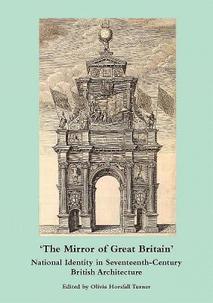
'The Mirror of Great Britain': National Identity in Seventeenth-Century British Architecture (Spire, 2012) is an edited volume of essays arising from a symposium that I organised for the Society of Architectural Historians of Great Britain.
The aim of this book is to focus attention on what we mean as architectural historians when we talk about 'British' architecture, particularly when dealing with the seventeenth century when the identities of England, Scotland and Ireland were being negotiated and when territorial expansion was taking place internationally. There are essays on architecture across the British Atlantic World, including Scotland, Wales, Ireland, America and Bermuda.
'a thought-provoking. . . salvo that deserves to reach a wide readership', Richard Fawcett in Transactions of the Ancient Monuments Society
The aim of this book is to focus attention on what we mean as architectural historians when we talk about 'British' architecture, particularly when dealing with the seventeenth century when the identities of England, Scotland and Ireland were being negotiated and when territorial expansion was taking place internationally. There are essays on architecture across the British Atlantic World, including Scotland, Wales, Ireland, America and Bermuda.
'a thought-provoking. . . salvo that deserves to reach a wide readership', Richard Fawcett in Transactions of the Ancient Monuments Society
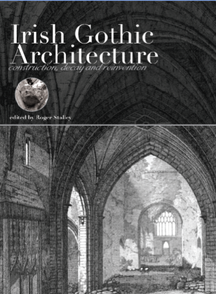
Irish Gothic Architecture: construction, decay and reinvention (Wordwell, 2012), edited by Roger Stalley, is about Gothic architecture and its afterlife in Ireland. It is one of the outcomes of the IRCHSS-funded project Reconstructions of the Gothic Past at TRIARC, Trinity College Dublin for which I was the post-doctoral researcher and later research associate.
My chapter, entitled 'Ruin and Reparation: medieval parish churches in seventeenth- and eighteenth-century Ossory', explores how it came to be that the Irish countryside is punctuated by hundreds of ruined medieval churches. Received wisdom is that they were devastated by Oliver Cromwell, but my analysis of primary sources such as visitation reports and administrative surveys has revealed a more complex and subtle history.
I'm delighted to say that in his review in the SAHGB Newsletter (No. 111), Richard Fawcett (who seems to have reviewed most things I've contributed to) considered my chapter to be a 'meticulous analysis' and said of the book as a whole that it was 'an attractive volume'. Copies of this fine publication are available from Wordwell Books.
My chapter, entitled 'Ruin and Reparation: medieval parish churches in seventeenth- and eighteenth-century Ossory', explores how it came to be that the Irish countryside is punctuated by hundreds of ruined medieval churches. Received wisdom is that they were devastated by Oliver Cromwell, but my analysis of primary sources such as visitation reports and administrative surveys has revealed a more complex and subtle history.
I'm delighted to say that in his review in the SAHGB Newsletter (No. 111), Richard Fawcett (who seems to have reviewed most things I've contributed to) considered my chapter to be a 'meticulous analysis' and said of the book as a whole that it was 'an attractive volume'. Copies of this fine publication are available from Wordwell Books.
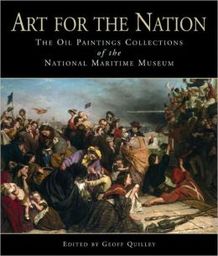
Art For The Nation: The Oil Paintings Collections of the National Maritime Museum (NMM, 2006), edited by Geoff Quilley, examines the formation of the collections at the National Maritime Museum in Greenwich.
My contribution - the chapter entitled 'A notable gift to the Nation: the Ingram Collection' - focusses on Sir Bruce Ingram, who in the 1950s and 1960s gave the museum over 700 drawings and more than 30 paintings. In it I explore the contribution his donations made to the museum's collection as a whole and how contemporaries saw in the marine paintings of the seventeenth century a nostalgic and patriotic vision of Britain's maritime strength.
It is now out of print, but you can find it via second-hand bookshops, or possibly mouldering on an aged aunt's bookshelf.
My contribution - the chapter entitled 'A notable gift to the Nation: the Ingram Collection' - focusses on Sir Bruce Ingram, who in the 1950s and 1960s gave the museum over 700 drawings and more than 30 paintings. In it I explore the contribution his donations made to the museum's collection as a whole and how contemporaries saw in the marine paintings of the seventeenth century a nostalgic and patriotic vision of Britain's maritime strength.
It is now out of print, but you can find it via second-hand bookshops, or possibly mouldering on an aged aunt's bookshelf.
